1-Week Prison Food Diet Reveals Problems With Inmate Meals: Low Cost, Bad Taste, And Very Little Nutrition
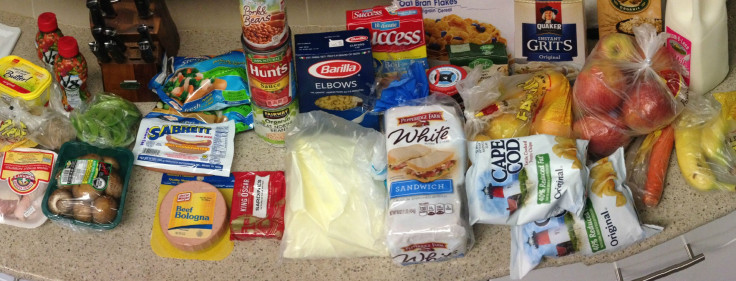
Brent Koster has spent most of his life in Michigan State prisons. Being practically raised on prison food, he has seen the rise and fall of its quality as it’s moved from public to private food services. Koster is one of the roughly 30 kitchen workers, and from behind that food line he watches juvenile delinquents, no younger than he was when he entered the system, stand in uniform cafeteria lines waiting to be served.
“I hate to admit it, but I have a number of years in, 43 years actually,” Koster, who was convicted of murder in 1973, told Medical Daily. “I went through a number of food transitions and it used to be pretty good. But when the state went through the budget cuts, it got progressively worse and worse and worse.”
The meatballs hurt his stomach, the chicken patties are indistinguishable from the fish dishes, and the inmates have come to affectionately call the bologna "cow tongue.”
Prison systems have a lengthy history of poor food quality, raising questions of ethical standards, especially when it comes to the oft-used “re-rack system.” Under the re-rack system, 95 percent of uneaten food is not thrown out, but rather frozen and re-served up to seven days after it was first distributed to the inmates. Meals lack basic dietary necessities, and fruits and vegetables are absent from inmate trays unless otherwise asked for due to budget cuts.
In December 2013, private food corporation Aramark won a bid to take over food services in Michigan State prisons, replacing hundreds of state workers with private employees. The menu is still administered and regulated by the Department of Corrections, but the responsibility to fulfill the daily meal guidelines and policies shifted from the state up to Aramark.
The privatization of prison food services began in 1939, when an Alabama state law handed over the reins to county sheriffs with a food budget of $1.75 a day per prisoner. Budgets largely dictated the food quality served to prisoners, and more than 70 years later the power of financial consideration still holds true. Today, the daily cost to feed a prisoner is between $2 and $3 a day.
There are more than 1.5 million incarcerated in state and federal prisons, according to the Department of Justice, and every single one must be fed according to guidelines. The federally run Food and Drug Administration (FDA) and state departments of health have designed food regulations that are both extensive and explicitly detailed in order to ensure safety and quality for the general public. However, that carefully calibrated system of food distribution and meal balance does not apply to prisons.
There is an ongoing fight for better quality prison food, with proposed theories on how to sustain a healthful diet while behind bars.The national debate involving correctional institutions comes during a time of tight governmental budget cuts and divided sympathy for the incarcerated.
After speaking with Koster about his experience, I decided to try the food for myself. I used the Federal Bureau of Prisons' Certified Menu from 2012 because it is recent and reflective of many meals Koster described to me in our interview. Although Koster would probably argue otherwise, food service in prisons aims to “prepare and serve three daily nutritional, appetizing meals,” according to the Federal Bureau of Prisons. There are three menu options provided for each inmate: regular, heart healthy, and non-flesh diet (vegetarian). Every meal is certified by Religious Services as kosher regardless of individual religious affiliation.
The heart healthy option is supposed to be low in sodium, fat, cholesterol, and sugar. Wheat bread replaces white bread and fruit is given instead of dessert. However, this meal option is provided for “the needs of inmates with special dietary needs,” such as diabetics or those at risk for cardiovascular disease, according to the 2007 Prisoner Law Section of Americans for Effective Law Enforcement (AELE) Law Journal.
But does it really matter if the prison serves the right portion of fruits, vegetables, whole grains, and unprocessed proteins each day? Is it inhumane to feed rapists white bread while they’re being punished for unspeakable crimes? By experiencing the day-to-day menu myself, I got a glimpse of what it’s like to eat without options.
My Week of Eating Like A Prisoner:
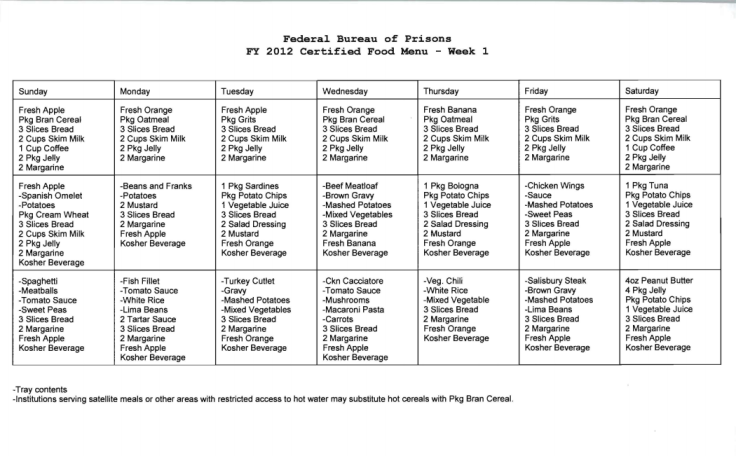
Monday
Breakfast
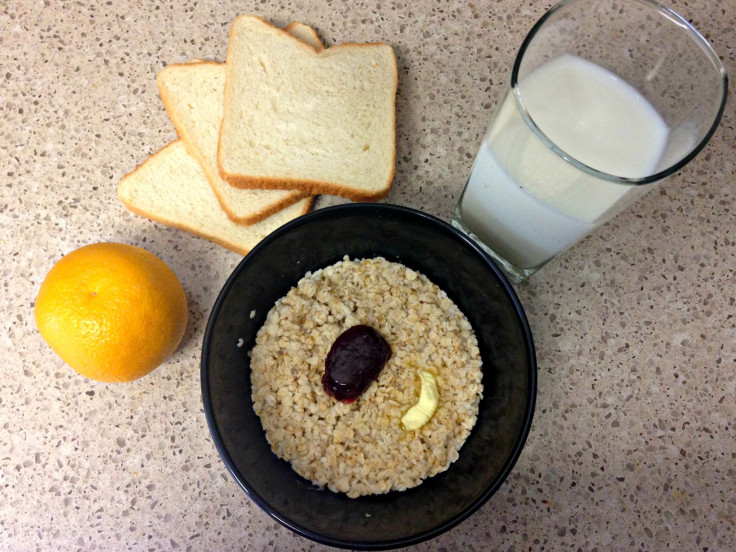
- Orange
- Package of oatmeal
- (3) slice of white bread
- (2) cups of skim milk
- (2) package of jelly
- (2) margarine
A departure from my typical Greek yogurt, banana, rice cake, or hard-boiled eggs, it was already clear to me this food was going to be a far cry from my normal diet. I ate the oatmeal and orange, then downed three slices of bread plain and chugged my milk.
Lunch

- Beans and franks
- Potatoes
- (2) mustard
- (3) slices of white bread
- (2) margarine
- Apple
- Kosher beverage
The mystery meat that is the hotdog had stripped me of my appetite for it three years ago. However, because prisoners are devoid of choice, I would be too. It was either eat it or go hungry. I had two pieces of hotdog, a few slices of potato, and most of the $0.99 can of beans. And even though I didn’t want any more bread, I found refuge in the plainness, which cleaned my tongue of the hotdog taste. I knew it wasn’t going to be enough food and that I really should eat the hotdog to stave away hunger, but I didn’t have it in me; I’d rather be hungry.
Dinner
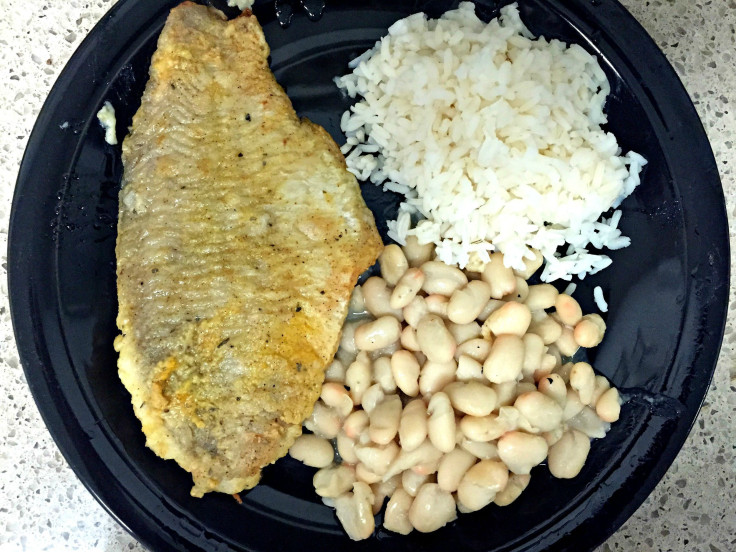
- Fish fillet
- Tomato Sauce
- White rice
- Lima beans
- (2) tartar sauce
- (3) slices of bread
- (2) margarine
- Apple
- Kosher beverage
I had eaten six pieces of bread today already, and nine would have been nearly a loaf. I turned to my apple for solace and found an old familiar taste. As for the kosher beverages I was supposed to be drinking, I settled for water. Inmates do have that choice and I decided to take it, too. I turned to a registered dietician for expert advice after my first day, who reviewed the Federal Bureau of Prisons' menu I based my meals on for the week.
“Dinner is nicely varied with the protein source,” Amy Shapiro, the founder of Real Nutrition NYC, told Medical Daily. “However, most of the carbs supplied are white from the bread to the rice to the pasta, which is void of fiber and many nutrients.”
Tuesday
Breakfast
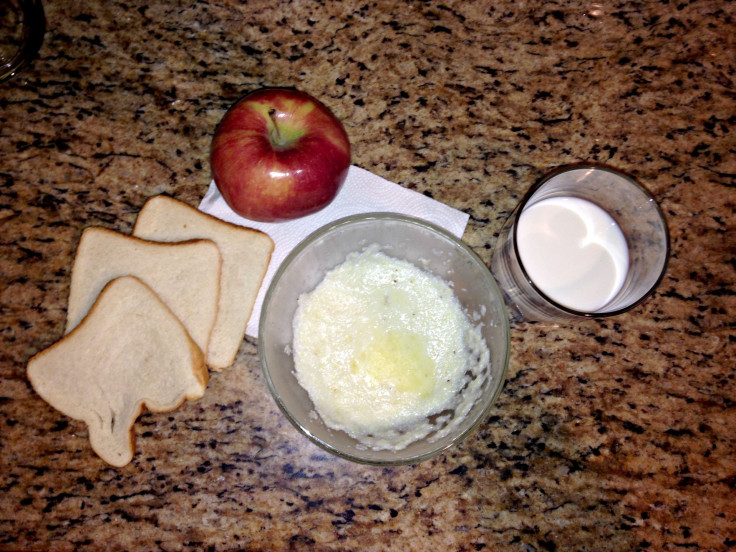
- Apple
- Package of grits
- (3) slices of white bread
- (2) cups of skim milk
- (2) package of jelly
- (2) margarine
Déjà vu. This morning felt very much like a replay of yesterday morning. Oatmeal and grits are packed with fiber and because it’s a warm meal there’s something comforting in its taste and texture. I ate my apple and skipped the bread again.Why eat all of this bread? It was just filling me up to let me down a couple hours later when I’d feel hungry again. It also comes with its share of health risks.
According to the Harvard School of Public Health, “a diet including a lot of white bread and other high-glycemic foods — like sweets, candy, desserts, and white potatoes — increases your risk for weight gain, type 2 diabetes, and heart disease.”
Lunch
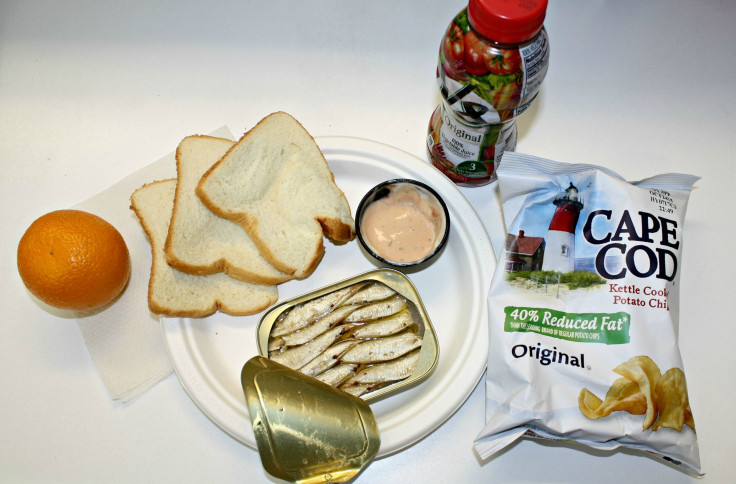
- Package of sardines
- Package of potato chips
- Vegetable juice
- (3) slices of white bread
- (2) salad dressing
- (2) mustard
- Orange
- Kosher beverage
I’ve never eaten sardines before, but I know I should because they’re packed with healthy omega-3 DHAs, which is a fancy way of saying “brain food.” Today I needed the bread to sandwich the sardines. The fishy smell was difficult to overcome, but I took two bites. Our marketing manager rallied and took a bite of his own for the sake of comradery, only to find out I was telling the truth. It really was difficult to stomach. The potato chips provided a familiarity in the flavorful crunch that any person in or out of prison may be able to relate to. The vegetable juice seemed like a quick and easy way to get veggies into an inmate, but it isn’t without its drawbacks.
“Vegetable juice is void of fiber,” Shapiro said. “I like that the inmates receive three fruits daily and veggies at two meals, but I would like to see more fish that is not fried, whole grains, colorful veggies, and heart healthy fats.”
Dinner

- Turkey cutlet
- Gravy
- Mashed potatoes
- Mixed vegetables
- (3) slices of white bread
- Orange
- Kosher beverage
I couldn’t find a turkey cutlet in the supermarket, so I defaulted to a turkey burger instead, and ate it alongside a defrosted package of frozen veggies (how prisoners normally eat vegetables), mashed potatoes, and gravy. Once again, I passed on the bread.
Wednesday
Breakfast

- Orange
- Package of bran cereal
- (3) slices of white bread
- (2) cups of skim milk
- (2) package of jelly
- (2) margarine
This morning, instead of chugging the milk like I normally did, I used it for my cereal. I was basically fed up with bread, so that left me with no use for the jelly or margarine. Bran cereal tastes like how it sounds — bland. But I decided bland was better than bad.
Shapiro shed some light on prisoners’ morning meals: “The menu is pretty carb heavy, especially at breakfast, with the only protein really coming from the milk. Breakfast errs on the high sugar side with sugar coming from the fruit, bread, milk, and jelly. Margarine is also not a healthy sub for butter.”
Lunch

- Beef meatloaf
- Brown gravy
- Mashed potatoes
- Mixed vegetables
- (3) slices of white bread
- Banana
- Kosher beverage
My mom makes delicious turkey meatloaf and that’s exactly why I knew I couldn’t ask her to make me a beef version. Prisoners may fantasize about grandma’s meatballs or the like, but part of the punishment is being deprived of the comforts of home. According to Koster, nearly everything served in prison is prepackaged and frozen, which is why I chose a microwaveable meatloaf dinner instead, which I ate with mashed potatoes, brown gravy, and mixed veggies. I routinely rejected the bread. And the banana was a nice change from the orange-apple alternation.
Dinner
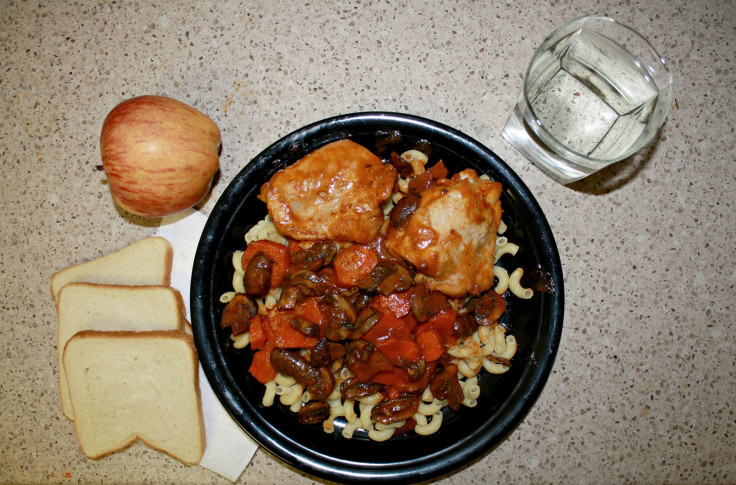
- Chicken cacciatore
- Tomato sauce
- Mushrooms
- Macaroni pasta
- Carrots
- (3) slices of white bread
- (2) margarine
- Apple
- Kosher beverage
The chicken mixed with the mushrooms and sauteed carrots tasted nice, but because chicken cacciatore is typically cooked with chicken thighs, it’s not considered a heart-healthy lean meat, according to the American Heart Association.
Later that night, I realized the food was starting to affect me on a mental level when my boyfriend’s normally light tone was laced with concern, “You’ve been really out of it lately. Are you OK?”
I had also been foggy at work for the last couple of days, having a difficult time stringing simple sentences together in my writing. I thought it was all in my head, but I was slowly learning the power food had on my mind and, as I would soon learn, my body.
Thursday
Breakfast
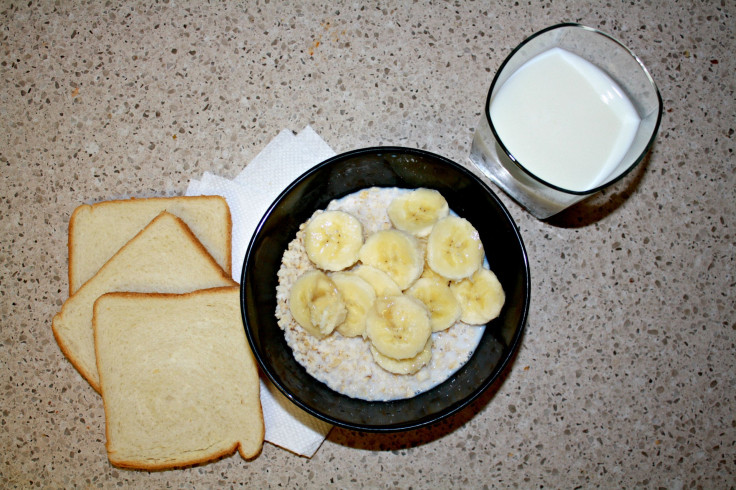
- Banana
- Package of oatmeal
- (3) slices of white bread
- (2) cups of skim milk
- (2) package of jelly
- (2) margarine
As soon as I woke up I knew something wasn’t right. I was reluctant to get out of bed and go for my morning run. Everything was slow, like moving through molasses. I looked at my menu. Banana and oatmeal? I left out the bread, jelly, and margarine, stomached half of the oatmeal, drank down my milk, and made my way out the door one day closer to freedom.
But I didn’t make it far before I sat hunched over in the hallway both dizzy and nauseous. Was I getting sick? I put my hand to my forehead and felt a cold but fine layer of sweat coated my skin. I decided to get up and walk. I made it half an hour before I felt strong enough to make it into a slow jog. The run wasn’t just difficult to make it through. It hurt. I had a hard time reconciling with the fact the food was having such a visceral effect on me. Was this food really as bad as my body perceived it to be?
Lunch

- Package of bologna
- Package of potato chips
- Vegetable juice
- (3) slices of white bread
- (2) salad dressing
- (2) mustard
- Orange
- Kosher beverage
I had never eaten bologna before, which I had learned is a seasoned smoked sausage “made of various meats, especially beef and pork.”
“Bologna and franks are not ideal,” Shapiro said. “They are loaded with nitrates, which have been shown to be carcinogenic.”
According to the American Cancer Society, frequent consumption of processed meats is associated with an increased risk of colon cancer. I took two bites and immediately began having hot dog flashbacks, but managed to clear a third bite. The bologna I ate was different from Koster’s “cow tongue” version, which he said is so bad he doesn’t even eat it.
Dinner

- Vegetable chili
- White rice
- Mixed vegetables
- (3) slices of white bread
- (2) margarine
- Orange
- Kosher beverage
I was hungry after a barely eaten lunch, but my stomach was uncomfortably bloated. I grabbed a fork and ate a few bites of the microwaveable chili, rice, and all of the vegetables. It was mushy, but overall tasty. As I savored the vegetables I remembered Koster said they serve fruits and vegetables only upon request to save money, shaving off pennies per prisoner each meal.
Friday
Breakfast
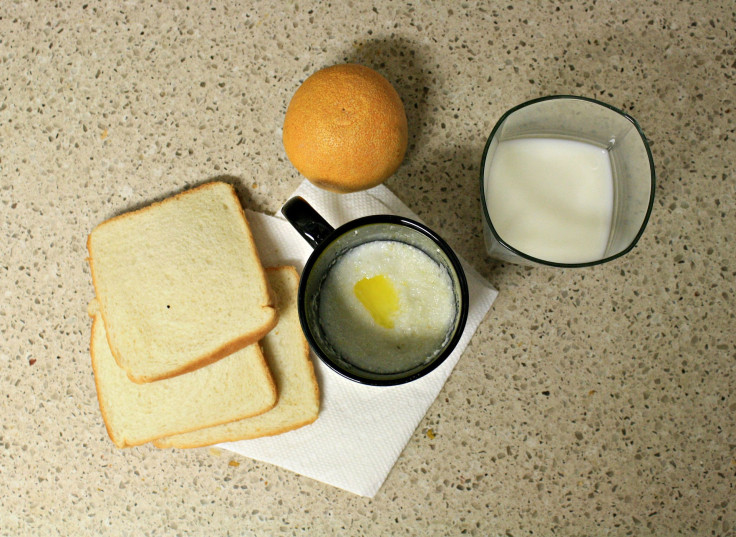
- Orange
- Package of grits
- (3) slices of white bread
- (2) cups of skim milk
- (2) package of jelly
- (2) margarine
Exhaustion. I barely had an appetite, despite having only eaten vegetables and a few bites of rice and chili last night. I had a spoonful of grits with a splash of milk and ate the orange. Before this week, I had always loved eating a big breakfast and rarely turned down a meal in general. This week, nothing was quite right.
Lunch
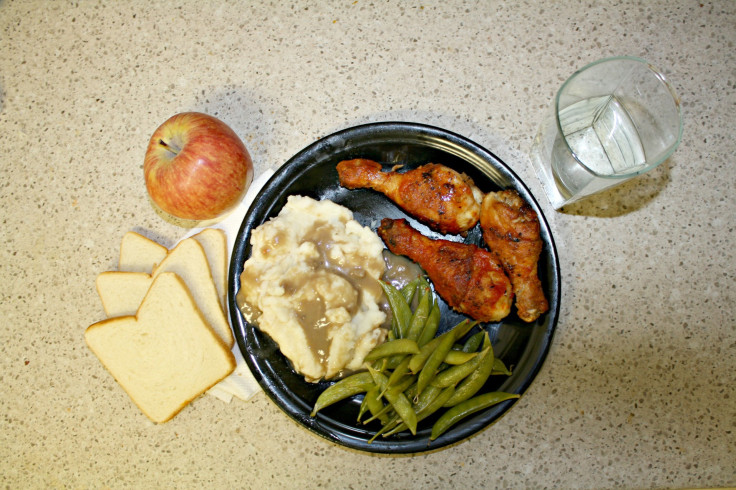
- Chicken wings
- Sauce
- Mashed potatoes
- Sweet peas
- (3) slices of white bread
- (2) margarine
- Apple
- Kosher beverage
I had one chicken wing and although the hot sauce was a welcomed palate shift, the mashed potatoes went untouched because of my missing appetite. I ate the steamed sweet peas, my apple, and was soon overcome with a strange sleepiness.
Dinner
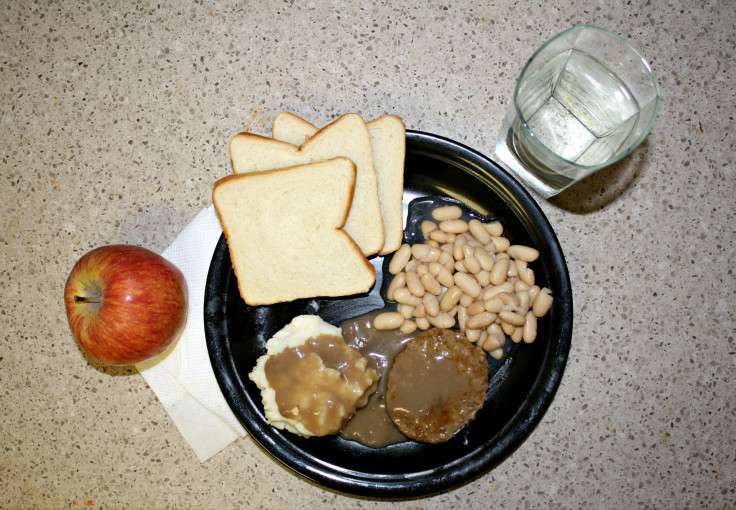
- Salisbury steak
- Brown gravy
- Mashed potatoes
- Lima beans
- (3) slices of white bread
- (2) margarine
- Apple
- Kosher beverage
Google Search: “What is a Salisbury steak?” I learned it was some sort of hamburger blend densely cooked into the shape of a steak. Instead of cooking it myself, I relied on another microwaveable meal, with a side of my own mashed potatoes, gravy, and beans. Another foolhardy attempt at eating like an inmate helped me swallow the beans, some mashed potatoes, and two bites of the meat. I calmly placed my fork down. I was done. I wonder how long it will take me to recover from this, I thought.
Food for Afterthought
After analyzing the menu from Monday to Sunday, Shapiro said the diet is missing leafy greens, fiber, whole grains, heart-healthy fats, and other vital nutrients. The inmates could do without the potatoes, potato chips, mashed potatoes, and fiberless vegetable juice.
I am acutely aware of the lamented tone throughout my food journal. Mimicking the diet of incarcerated inmates had taken its toll on both my body and mind. The entire week I gave my food dirty looks, stare downs, and fork pokes. I felt like a snob. The food drastically affected my ability to concentrate, exercise, sleep, and eat. And there was something deeply degrading about my inability to choose. Even the thought of limitation unnerved me. But from what I could ascertain from Koster, this was the way life functioned during incarceration and had been since the prison system was initially introduced nearly 200 years ago.
“I have a problem digesting a lot of this food,” Koster said. “I mean, really. It turns my stool a funny color. There’s no seasoning at all that’s put into anything. Most of the stuff is ready-made mixes or re-racked and re-purposed food. I understand they’re trying to save money, but they go to the extreme with it. Everything’s a numbers game. They could care about anything less than the numbers.”
Published by Medicaldaily.com



























